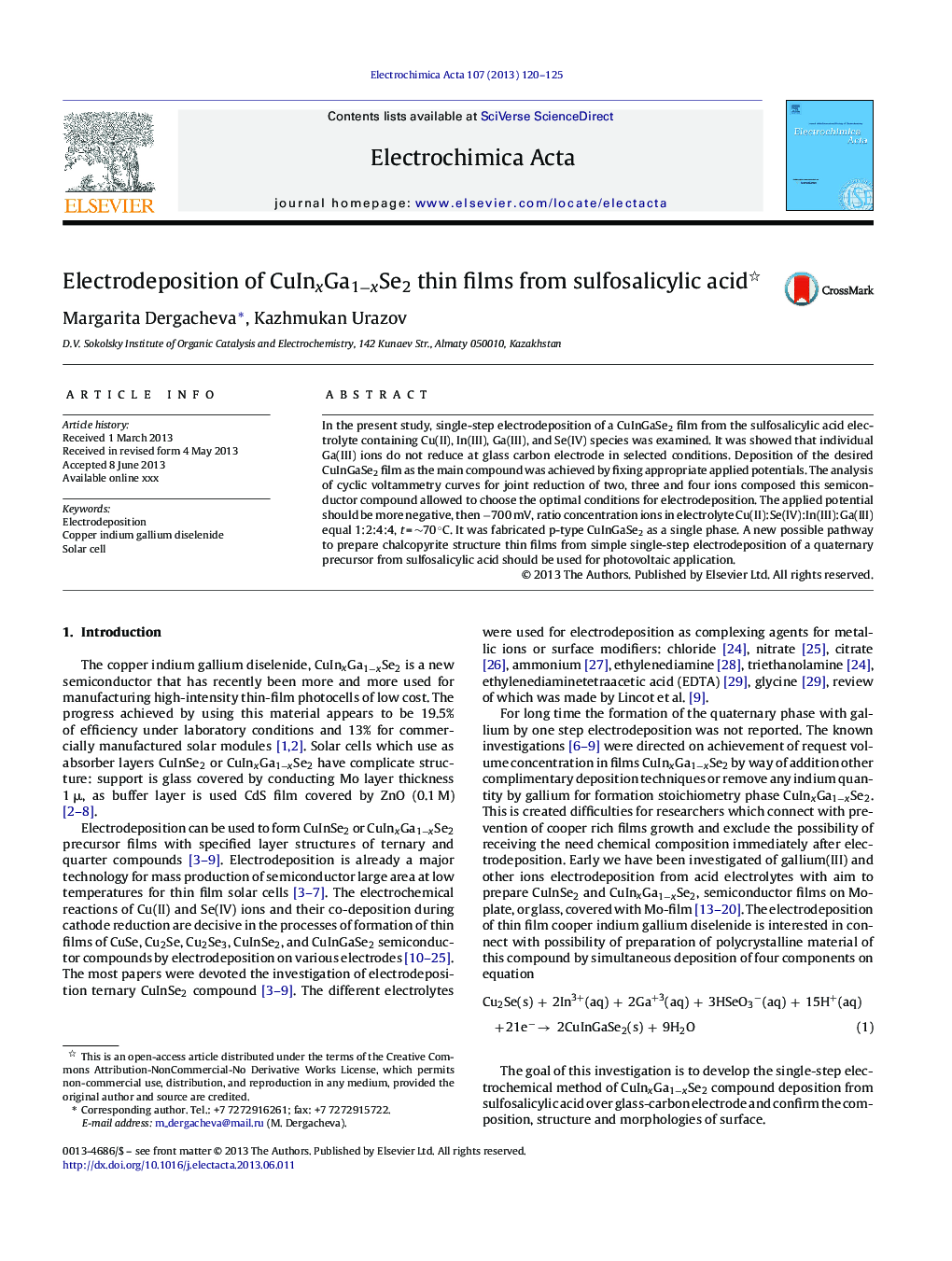| Article ID | Journal | Published Year | Pages | File Type |
|---|---|---|---|---|
| 6616626 | Electrochimica Acta | 2013 | 6 Pages |
Abstract
In the present study, single-step electrodeposition of a CuInGaSe2 film from the sulfosalicylic acid electrolyte containing Cu(II), In(III), Ga(III), and Se(IV) species was examined. It was showed that individual Ga(III) ions do not reduce at glass carbon electrode in selected conditions. Deposition of the desired CuInGaSe2 film as the main compound was achieved by fixing appropriate applied potentials. The analysis of cyclic voltammetry curves for joint reduction of two, three and four ions composed this semiconductor compound allowed to choose the optimal conditions for electrodeposition. The applied potential should be more negative, then â700 mV, ratio concentration ions in electrolyte Cu(II):Se(lV):In(III):Ga(III) equal 1:2:4:4, t = â¼70 °C. It was fabricated p-type CuInGaSe2 as a single phase. A new possible pathway to prepare chalcopyrite structure thin films from simple single-step electrodeposition of a quaternary precursor from sulfosalicylic acid should be used for photovoltaic application.
Related Topics
Physical Sciences and Engineering
Chemical Engineering
Chemical Engineering (General)
Authors
Margarita Dergacheva, Kazhmukan Urazov,
